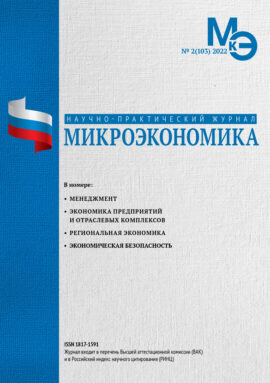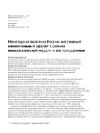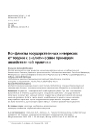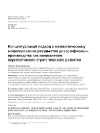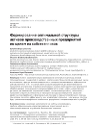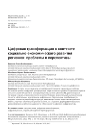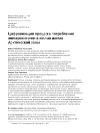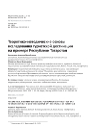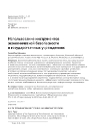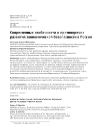Monetary policy in Russia: negative cumulative effect in the framework of the neoclassical model and its overcoming
DOI: 10.33917/mic-2.103.2022.5-38
Monetary policy is the most important instrument of economic growth policy, but the influence of any instrument may weaken or strengthen over time. We will designate this state as the cumulative effect of monetary policy. The purpose of the study is to determine the cumulative effect of monetary policy, with the identification of the effectiveness of its measures in ensuring the growth of the Russian economy. The methodology of the study consists of monetary theory, structural analysis of the money supply, the principle of «goals-tools» of economic policy and correlation and regression analysis, which allow to identify the presence of the cumulative effect of monetary policy, to determine its impact on relevant macroeconomic goals: GDP growth and inflation.
The result of the study is the application of the introduced indicators of the sensitivity of macro-policy goals to monetary policy instruments, representing a picture of the weakening of the influence of monetary policy on the growth of the Russian economy. The increasing monetization was accompanied, in particular, by a decrease in the growth rate of the Russian economy, the unfolding of a recession, the consequences of which affect the dynamics of economic development, while maintaining a tight monetary policy option – with an increase in the key interest rate. The structural analysis of the money supply for the M2 aggregate made it possible to identify those components that, with an increase, slow down growth and reduce inflation, as well as to determine the closeness of the relationship of the interest rate with the changing components of the money supply. The assessment of the cumulative effect of monetary policy on two goals of macroeconomic development – growth and inflation, and two monetary policy instruments – the M2 money supply and the key interest rate, confirmed the existence of a negative cumulative effect of the policy for the growth goal and a positive cumulative effect on the inflation rate. For two purposes at once, the positive cumulative effect of monetary policy is confirmed only for the period 2016-2018 in the interval 2001-2020. Thus, monetary policy, firstly, ensured the containment of inflation out of connection with growth, and secondly, provided different cumulative effects for different purposes – due to the different sensitivity of the target to the instruments.
The prospect of the study is seen in the creation of some kind of aggregated indicator that would allow taking into account the overall impact on the dynamics of the entire set of monetary policy measures, and not separately by goals and instruments, as presented in this study.
References:
1. Glazyev S.Yu. A leap into the future. Russia in new technological and world economic structures. Moscow: Knizhny Mir, 2018. 768 p. (In Russ.).
2. Glazyev S.Yu. Lessons of the next Russian revolution: the collapse of a liberal utopia and a chance for an «economic miracle». Moscow: Publishing House «Ekonomicheskaya Gazeta», 2011. 576 p. (In Russ.).


